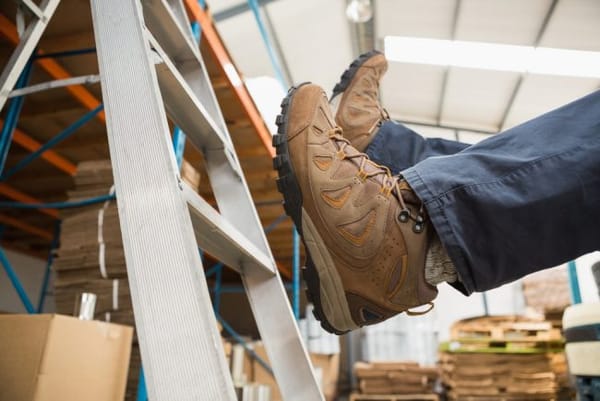Falls from height still a leading cause of injury
Falls from height continue to be a leading cause of injury in workplaces. Employers must ensure this common risk is eliminated wherever possible.
Last month, a young worker in NSW was injured when he fell almost 5 metres through an exposed void in a bridge under construction. The worker was working along reinforcement bars and across the concrete bridge beams when he stepped on a steel plate covering a void, which dislodged.
This is just one example of a fall from height resulting in injury. There are many, many more cases out there like this one, including falls resulting in death.
Safe Work Australia’s statistics show that between 2015 and 2019:
- 122 workers were killed following a fall from heights;
- the greatest number of fatalities involved falling from buildings and other structures (25), ladders (19) and working animals (horses, donkeys and mules) (10); and
- the construction industry accounted for 40% of fall-related fatalities.
The most effective way to reduce fall risks is to implement measures that either prevent the fall itself, or prevent a person who falls from coming into contact with a hard surface.
Common control measures for reducing fall risks include:
- fixed or temporary work platforms;
- travel restraint devices;
- fall protection covers;
- elevated work platforms; and
- fall restraint systems.
Importantly, if you have these controls available, you must ensure you put them in place.
In the recent decision of SafeWork NSW v Mercon Group Pty Ltd, a company was fined $90,000 after it failed to put in place catch decks to prevent workers from falling to the ground. The company workers were removing concrete slabs to make space for installation of stairways and elevators on a building site. Two employees fell through the slab when it collapsed, suffering serious injuries. The company had catch decks available to be used but the principal that had engaged the company had not accepted the original quote with the catch decks, so the catch deck item was removed and work proceeded without that protection.
TIP: Subscribers to the Health & Safety Handbook can find more in-depth information about this topic in the chapter ‘Working at heights’.
From the experts behind the Health & Safety Handbook, the Bulletin brings you the latest work health and safety news, legal updates, case law and practical advice straight to your inbox every week.

